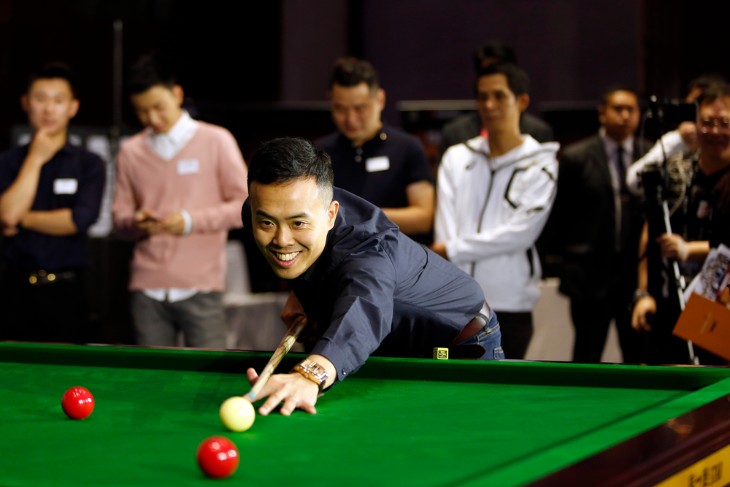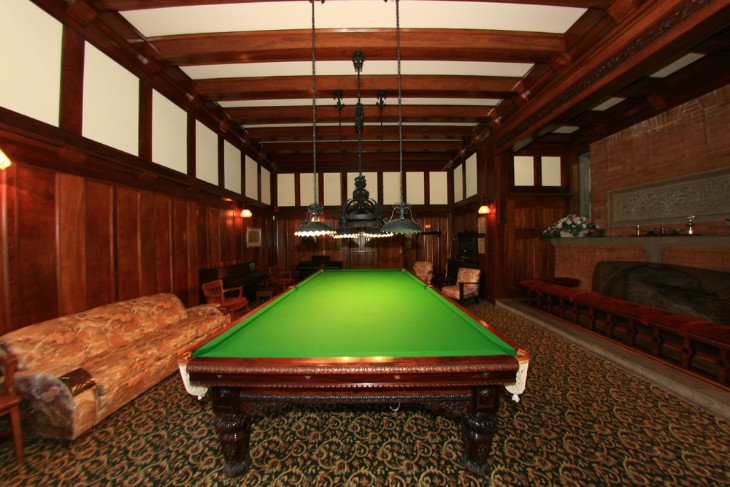- Prominent International Snooker Players
- Cue Techniques in British Snooker
- Cue Techniques in International Snooker
- Strategic Approaches in British Snooker
- Strategic Approaches in International Snooker
- Rules and Regulations in British Snooker
- Rules and Regulations in International Snooker
- Impact and Influence of British Snooker on the Global Scene
- Conclusion
British snooker's development has been characterized by a meticulous focus on technique, precision, and strategy. British players are renowned for their consistent and calculated approach to the game. Their emphasis on building substantial breaks by potting balls in a particular sequence showcases their methodical approach to snooker. This style of play has led to the production of many British snooker champions, each known for their composure and astute game management.
In addition to technique, the British snooker scene has nurtured a rich tradition of sportsmanship and etiquette. Players are expected to demonstrate respect for their opponents and the game itself, reflecting the sport's British heritage. Furthermore, British players often engage in prolonged tactical battles, employing intricate safeties and defensive shots, which set them apart in the world of snooker.
British snooker history boasts an impressive array of key figures who have left an indelible mark on the sport. One of the most celebrated figures in British snooker is Joe Davis, often referred to as the "Father of Snooker." Davis dominated the sport during the 1920s and 1930s, winning the World Snooker Championship 15 times consecutively from 1928 to 1946. His exceptional cue control and mastery of the game's intricacies set a high standard for generations of British snooker players to follow.
Another iconic British snooker figure is Steve Davis, who enjoyed a remarkable career in the 1980s. His precision and consistency were his hallmarks, and he played a pivotal role in popularizing the sport across the UK. Davis won six World Snooker Championships, becoming a household name and an inspiration for aspiring snooker players.
While British snooker was flourishing, the sport was also making strides on the global stage. The World Snooker Championship, founded in 1927, gradually opened its doors to international players, marking a significant shift in the sport's dynamics. Players from countries like Australia, Canada, and India began competing, bringing their unique styles and techniques to the world of snooker.
The advent of televised snooker broadcasts in the 1970s further expanded the sport's global reach. Iconic players like Australia's Eddie Charlton and Canada's Cliff Thorburn emerged, showcasing different playing styles and contributing to the diversification of snooker techniques. The introduction of ranking tournaments and the global expansion of snooker events also played a crucial role in the sport's evolution, with players from various nations competing for coveted titles.
Prominent International Snooker Players
As the world of snooker expanded beyond its British origins, it saw the rise of numerous international players who have made significant contributions to the sport. One of the most revered international snooker players is Canada's Cliff Thorburn. Known for his calm demeanor and precise potting, Thorburn became the first player to achieve a maximum 147 break at the World Snooker Championship in 1983, leaving an indelible mark on the history of snooker.
Australia, too, has produced notable snooker talent in the form of Neil Robertson. Robertson's attacking style and break-building prowess have earned him a place among the sport's elite. He became the first Australian to win the World Snooker Championship in 2010, solidifying his reputation as a formidable international player.

Cue Techniques in British Snooker
British snooker players are renowned for their exceptional cue control and precision. Their cue techniques emphasize consistency and accuracy, with a focus on potting balls in a precise order to build substantial breaks. The stance of British players is typically balanced, with the cue arm aligned meticulously, allowing for precise cue ball control. The use of the rest or the spider, specialized cueing aids, is also a common practice among British snooker players, highlighting their commitment to accurate shot execution.
Moreover, British snooker players often employ various types of spin and side spin to manipulate the cue ball's path. This advanced cue ball control enables them to position it precisely for the next shot, showcasing their mastery of cue techniques. The deliberate and meticulous approach to cueing, coupled with years of practice and refinement, distinguishes British snooker players on the global stage.
Cue Techniques in International Snooker
International snooker players bring a diverse range of cue techniques to the sport, reflecting the global nature of the game. These players often exhibit unique styles and approaches that set them apart. For instance, Chinese snooker players, like Ding Junhui and Ronnie O'Sullivan, have introduced elements of flair and creativity into their cue techniques. They are known for their ability to pot balls with power and precision, sometimes opting for aggressive shots that leave spectators in awe. This dynamic style of cueing has garnered them both critical acclaim and numerous titles on the international snooker circuit.
Australian players, on the other hand, often showcase a fluid and natural cueing style. Their relaxed posture and smooth cue action contribute to their ability to control the cue ball with ease. This style, exemplified by players like Neil Robertson, emphasizes fluency and rhythm in the game, offering a stark contrast to the more deliberate British approach. Such diversity in cue techniques among international snooker players adds an exciting dimension to the sport, making it a truly global spectacle.
Strategic Approaches in British Snooker
British snooker players are renowned for their methodical and strategic approach to the game. They prioritize building substantial breaks by potting balls in a particular sequence, often favoring a more cautious and patient style of play. Safety shots and defensive play are integral to their strategy, with players employing snookers to force errors from their opponents. This approach, while not as flamboyant as some international styles, is highly effective in maintaining control of the table and dictating the flow of the game.
Moreover, British snooker players excel in the tactical aspect of the sport. They meticulously plan their shots, accounting for the position of the cue ball after each pot, and they are adept at exploiting opportunities for snookers. This strategic acumen, coupled with their precise cue techniques, positions British snooker players as formidable opponents in any match.
Strategic Approaches in International Snooker
International snooker players bring a diverse range of strategic approaches to the table, reflecting the global nature of the sport. Players from countries like China, India, and Thailand often showcase a more aggressive style of play, characterized by their willingness to take on challenging pots and build breaks quickly. This bold approach can create high-scoring frames and keep spectators on the edge of their seats.
Chinese snooker players, in particular, are known for their precision in long potting and the ability to seize opportunities for big breaks. This approach, coupled with their emphasis on safety play when necessary, has led to the emergence of several Chinese snooker champions on the world stage. Their strategic versatility and adaptability make them formidable opponents.
Additionally, Indian snooker players have made a mark with their focus on tactical innovation. They often employ unconventional strategies, including unconventional shot choices and positional play, to gain an advantage over their opponents. This dynamic and inventive style of play has resulted in Indian players earning respect and recognition in international snooker tournaments.
Rules and Regulations in British Snooker
British snooker adheres to a set of well-defined rules and regulations that govern the game's conduct and fairness. These rules are maintained and enforced by governing bodies such as the World Professional Billiards and Snooker Association (WPBSA). Central to the rules of British snooker is the requirement for players to adhere to a strict code of conduct, emphasizing sportsmanship and respect for opponents.
One of the fundamental rules in British snooker is the scoring system, where players aim to pot specific colored balls in a particular sequence, followed by the black ball. Fouls, such as potting the cue ball or failing to hit a nominated ball, result in penalty points awarded to the opponent. This aspect of the game adds a layer of strategic depth, as players must balance potting balls with tactical safety play to maintain control.
Moreover, the rules of British snooker encompass various aspects of gameplay, including the correct use of equipment, the determination of legal shots, and the procedures for conceding frames. The adherence to these rules ensures a fair and consistent playing experience, making British snooker a respected and organized sport on the global snooker stage.

Rules and Regulations in International Snooker
International snooker is governed by a set of rules and regulations that aim to maintain fairness and consistency across the sport. The World Snooker Federation (WSF) and the World Professional Billiards and Snooker Association (WPBSA) are the primary bodies responsible for overseeing and enforcing these rules. While the core principles of the game remain the same worldwide, there are subtle differences in international snooker regulations compared to British snooker.
One notable difference is the use of the cue ball after fouls. In international snooker, when a player commits a foul, the cue ball is not placed in the "D" as in British snooker but instead is played from where it lies. This rule encourages attacking play and can lead to more open frames. Additionally, international snooker often employs shot clocks to ensure timely play, a feature not commonly seen in British snooker. This emphasizes the need for players to make decisions quickly, adding an element of pressure to the game.
Furthermore, the rules governing the scoring of fouls and the use of technology for decisions vary slightly in international snooker, contributing to the distinctive characteristics of the sport in different regions. These nuances in regulations, while subtle, can significantly impact the pace and style of play in international snooker competitions.
Impact and Influence of British Snooker on the Global Scene
British snooker has played a pivotal role in shaping the global snooker landscape. Its rich history, traditions, and top-quality players have served as a foundation upon which international snooker has grown and flourished. The World Snooker Championship, held annually in the United Kingdom, remains one of the most prestigious events in the snooker calendar, attracting top talent from around the world.
Moreover, the meticulous cue techniques, strategic approaches, and sportsmanship ingrained in British snooker have influenced and inspired international players. The emphasis on precision and control, as well as the commitment to maintaining the integrity of the game, has become a hallmark of world-class snooker.
Conclusion
In conclusion, comparing British snooker styles with those from the rest of the world reveals a fascinating diversity within the sport. While British snooker is characterised by its meticulous cueing and strategic approach, international snooker showcases a range of styles, from aggressive potting to inventive tactics.
For more information:




.webp)


 (1).webp)




















